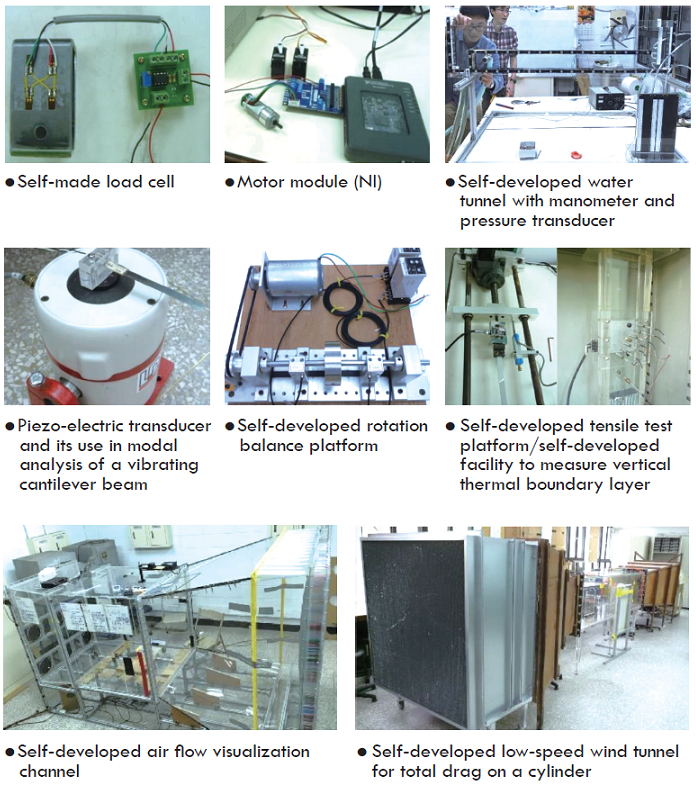The Measurement and Mechanical Engineering Laboratory was reformed in 2017 and is now the primary teaching base for the year-long compulsory course for junior students, Measurement and Mechanical Engineering Laboratory. Weekly lectures are first offered to introduce how different transducers can measure various physical quantities. The lectures cover the realization of each sensing technique and how each technique may be implemented into a mechanical system to monitor the physical processes. Following the lectures, students take weekly laboratory sessions in a group of 3-5 students to (1) implement basic sensing elements plus the signal manipulation circuit, (2) assemble and operate fundamental transducers with calibration, (3) conduct in-situ measurements via data acquisition facilities and commands, and (4) analyze the data and evaluate their measurements. Currently, the syllabus covers 12 sensing elements or techniques, including strain gauges, load cells, piezoelectric actuators, accelerometers, thermal couples, manometers, pressure transducers, rotameters, orifices, ultrasonic flow meters, pitot tubes, and PIV velocity field measurement. We also work with 10 measurement or mechanical systems to prepare students for realistic applications. The present facilities include 2 X-Y tables, 14 sets of motor modules, 10 rotation balance test platforms, 12 programmable tensile test platforms, 1 low-speed wind tunnel, 1 flow visualization air channel, 3 liquid flow visualization shear cells, 3 thermal boundary layer flow channels, 4 table-top water tunnels, and 3 refrigeration systems. Operating and measuring mechanical systems help students to consolidate their understanding of fundamental mechanics from different disciplines and advance their vision in system design. Also addressed in the course are the error evaluation in the post-data analysis and how measurement uncertainty should be taken into consideration when seeking a measurement solution. Eventually, students can design and build a measurement facility or mechanical system under the consideration of both accuracy and cost. Acknowledging the benefits of laboratory practice on the education and learning of fundamental mechanics, we share the facilities for use in other compulsory/selective courses so that new experiments can be designed to enrich the present curriculum.
| |||
自訂網頁 : hotlink

welcome
自訂網頁 : link_COMMUNITY

自訂網頁 : serch

Google站內搜尋器

